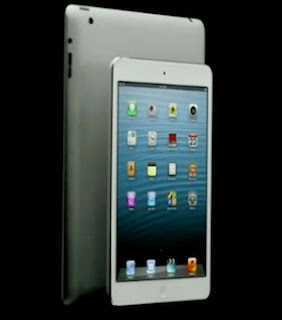The Sony Xperia GX is an Android 4.0-based LTE handset with a 13-megapixel camera and is made for release in Japan. It features a 4.6-inch, 720p "Reality Display" utilizing Sony's Mobile Bravia Engine, a dual-core 1.5GHz processor, and 16GB of internal storage.
Besides Xperia Ion targeted for the Japanese market, Sony has introduced two mobile phones, one of which adopt 4G LTE technology in Japan. The phone in question is the Xperia GX. This device runs on the Android 4.0 operating system or the more famous by the name of Ice Cream Sandwich.
And as mentioned about the camera, the Xperia GX offers high resolution 13 MP camera with HD video recording capabilities and LED flash.
Sony Xperia GX
The GX has a display size of 4.6 inch Mobile BRAVIA and dual-core processor 1.5 GHz. For internal storage, 16 GB of space served.
With LTE technology, Sony claims this divice is capable of downloading up to 75Mbps.
Unfortunately, this Smartphone just released in Japan. Sony has not announced pricing, and plans to sell the Xperia GX in other countries.
Sony Xperia GX full specification look this table :
Overview 2G Network GSM 850 / 900 / 1800 / 1900
3G Network HSDPA
4G Network LTE 2100
SIM Micro-SIM
Announced 2012, May
Status Available. Released 2012, August
Design Dimensions 131 x 69 x 8.6 mm (5.16 x 2.72 x 0.34 in)
Weight 127 g (4.48 oz)
- Touch-sensitive controls
Display Type LED-backlit LCD, capacitive touchscreen, 16M colors
Size 720 x 1280 pixels, 4.6 inches (~319 ppi pixel density)
Multitouch Yes, up to 10 fingers
Protection Scratch-resistant glass
- Sony Mobile BRAVIA Engine
- Timescape UI
Ringtones Alert types Vibration; MP3 ringtones
Loudspeaker Yes3.5mm jack Yes
Storage Card slot microSD, up to 32 GB
Internal 16 GB storage, 1GB RAM
Connectivity GPRS Up to 86 kbps
EDGE Up to 237 kbps
Speed HSDPA, 14.4 Mbps; HSUPA, 5.76 Mbps; LTE, 25 Mbps UL, 75 Mbps DL
WLAN Wi-Fi 802.11 a/b/g/n, Wi-Fi Direct, DLNA, Wi-Fi hotspot
Bluetooth Yes, v3.1 with A2DP
USB Yes, microUSB (MHL) v2.0
Camera Primary 13 MP, autofocus, LED flash
Features Geo-tagging, touch focus, face and smile detection, 3D sweep panorama, image stabilization
Video Yes, 1080p@30fps, continuous autofocus, video light, video stabilizer
Secondary Yes, 1.3 MP, 720p@30fps
Platform OS Android OS, v4.0 (Ice Cream Sandwich)
Chipset Qualcomm MSM8960 Snapdragon
CPU Dual-core 1.5 GHz Krait
GPU Adreno 225
Features Sensors Accelerometer, gyro, proximity, compass
Messaging SMS (threaded view), MMS, Email, IM, Push Email
Browser HTML5, Adobe Flash
Radio No
GPS Yes, with A-GPS support
Java Yes, via Java MIDP emulator
Colors Black, White
- SNS integration
- TV-out (via MHL A/V link)
- Active noise cancellation with dedicated mic
- MP4/H.263/H.264/WMV player
- MP3/eAAC+/WMA/WAV player
- TrackID music recognition
- Google Search, Maps, Gmail,
YouTube, Calendar, Google Talk
- Document viewer
- Voice memo/dial/commands
- Predictive text input
Battery Standard battery, Li-Ion 1700 mAh
Stand-by Up to 300 h (2G) / Up to 380 h (3G)
Talk time Up to 6 h 40 min (2G) / Up to 6 h 40 min (3G)
Besides Xperia Ion targeted for the Japanese market, Sony has introduced two mobile phones, one of which adopt 4G LTE technology in Japan. The phone in question is the Xperia GX. This device runs on the Android 4.0 operating system or the more famous by the name of Ice Cream Sandwich.
And as mentioned about the camera, the Xperia GX offers high resolution 13 MP camera with HD video recording capabilities and LED flash.
Sony Xperia GX
The GX has a display size of 4.6 inch Mobile BRAVIA and dual-core processor 1.5 GHz. For internal storage, 16 GB of space served.
With LTE technology, Sony claims this divice is capable of downloading up to 75Mbps.
Unfortunately, this Smartphone just released in Japan. Sony has not announced pricing, and plans to sell the Xperia GX in other countries.
Sony Xperia GX full specification look this table :
Overview 2G Network GSM 850 / 900 / 1800 / 1900
3G Network HSDPA
4G Network LTE 2100
SIM Micro-SIM
Announced 2012, May
Status Available. Released 2012, August
Design Dimensions 131 x 69 x 8.6 mm (5.16 x 2.72 x 0.34 in)
Weight 127 g (4.48 oz)
- Touch-sensitive controls
Display Type LED-backlit LCD, capacitive touchscreen, 16M colors
Size 720 x 1280 pixels, 4.6 inches (~319 ppi pixel density)
Multitouch Yes, up to 10 fingers
Protection Scratch-resistant glass
- Sony Mobile BRAVIA Engine
- Timescape UI
Ringtones Alert types Vibration; MP3 ringtones
Loudspeaker Yes3.5mm jack Yes
Storage Card slot microSD, up to 32 GB
Internal 16 GB storage, 1GB RAM
Connectivity GPRS Up to 86 kbps
EDGE Up to 237 kbps
Speed HSDPA, 14.4 Mbps; HSUPA, 5.76 Mbps; LTE, 25 Mbps UL, 75 Mbps DL
WLAN Wi-Fi 802.11 a/b/g/n, Wi-Fi Direct, DLNA, Wi-Fi hotspot
Bluetooth Yes, v3.1 with A2DP
USB Yes, microUSB (MHL) v2.0
Camera Primary 13 MP, autofocus, LED flash
Features Geo-tagging, touch focus, face and smile detection, 3D sweep panorama, image stabilization
Video Yes, 1080p@30fps, continuous autofocus, video light, video stabilizer
Secondary Yes, 1.3 MP, 720p@30fps
Platform OS Android OS, v4.0 (Ice Cream Sandwich)
Chipset Qualcomm MSM8960 Snapdragon
CPU Dual-core 1.5 GHz Krait
GPU Adreno 225
Features Sensors Accelerometer, gyro, proximity, compass
Messaging SMS (threaded view), MMS, Email, IM, Push Email
Browser HTML5, Adobe Flash
Radio No
GPS Yes, with A-GPS support
Java Yes, via Java MIDP emulator
Colors Black, White
- SNS integration
- TV-out (via MHL A/V link)
- Active noise cancellation with dedicated mic
- MP4/H.263/H.264/WMV player
- MP3/eAAC+/WMA/WAV player
- TrackID music recognition
- Google Search, Maps, Gmail,
YouTube, Calendar, Google Talk
- Document viewer
- Voice memo/dial/commands
- Predictive text input
Battery Standard battery, Li-Ion 1700 mAh
Stand-by Up to 300 h (2G) / Up to 380 h (3G)
Talk time Up to 6 h 40 min (2G) / Up to 6 h 40 min (3G)






















